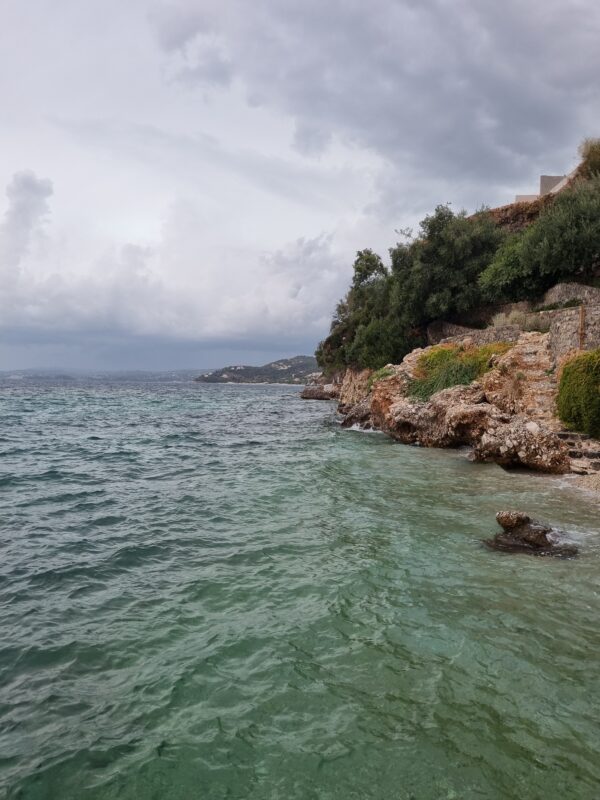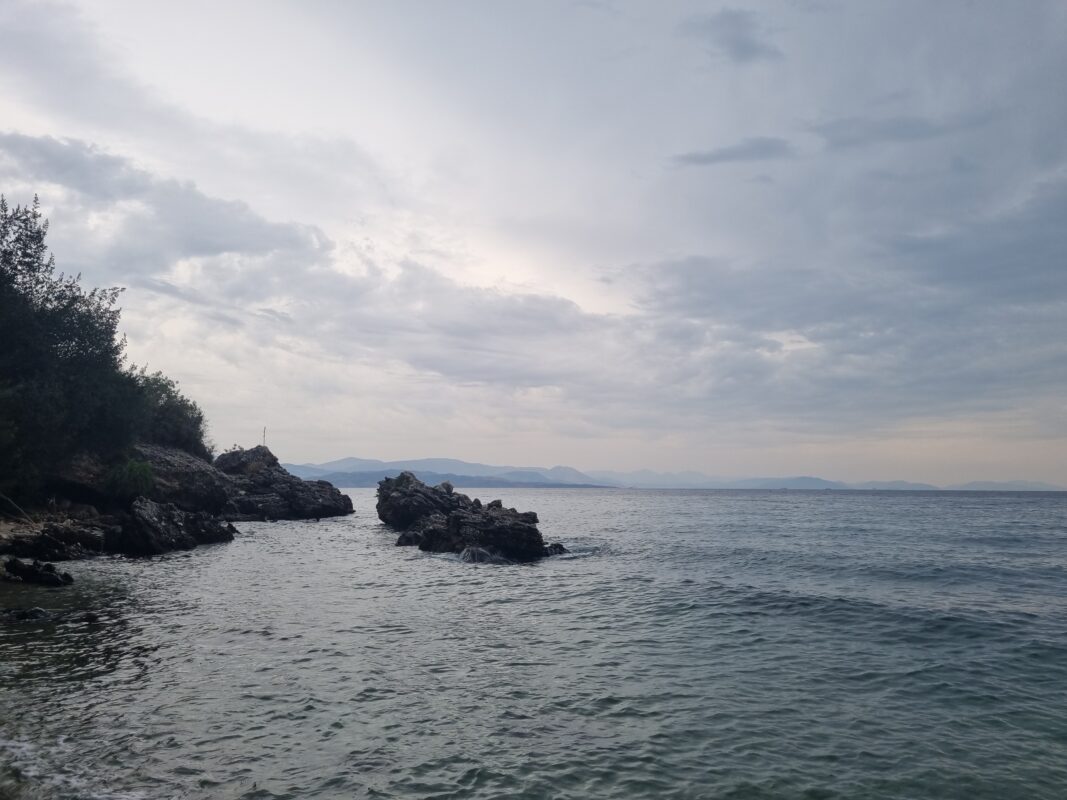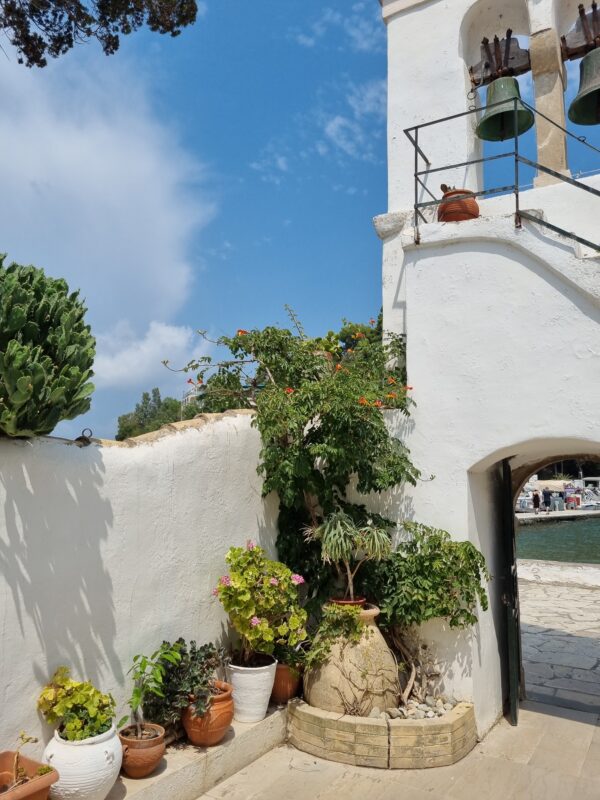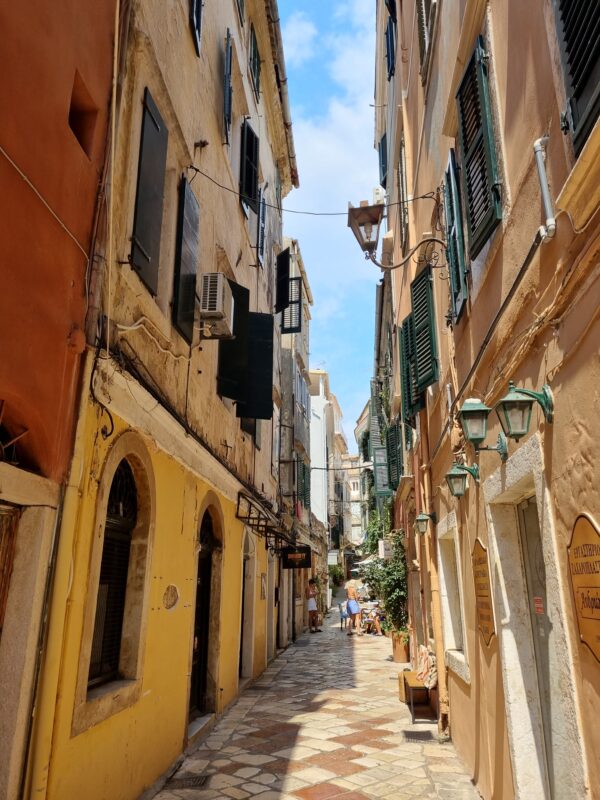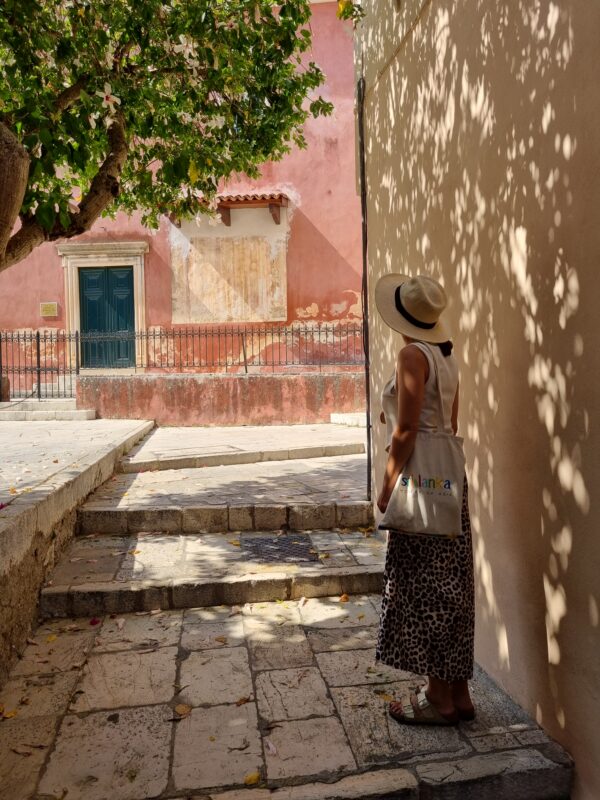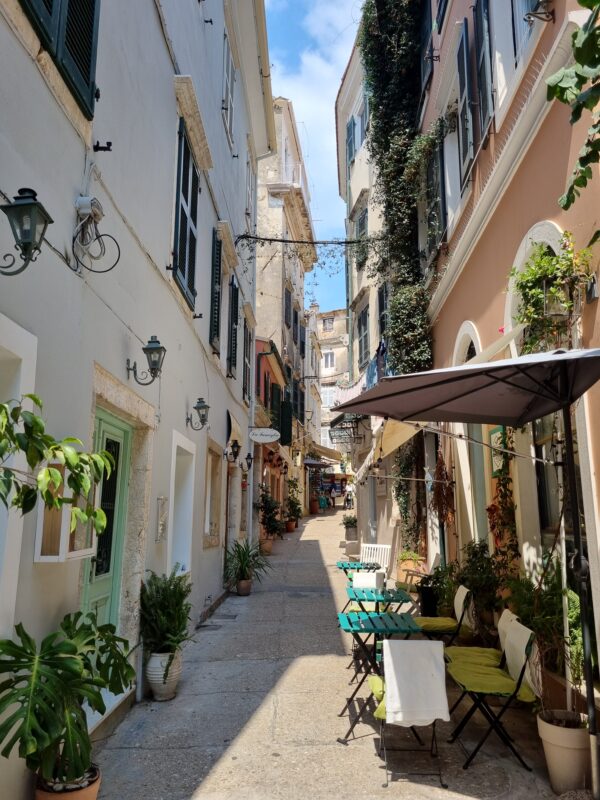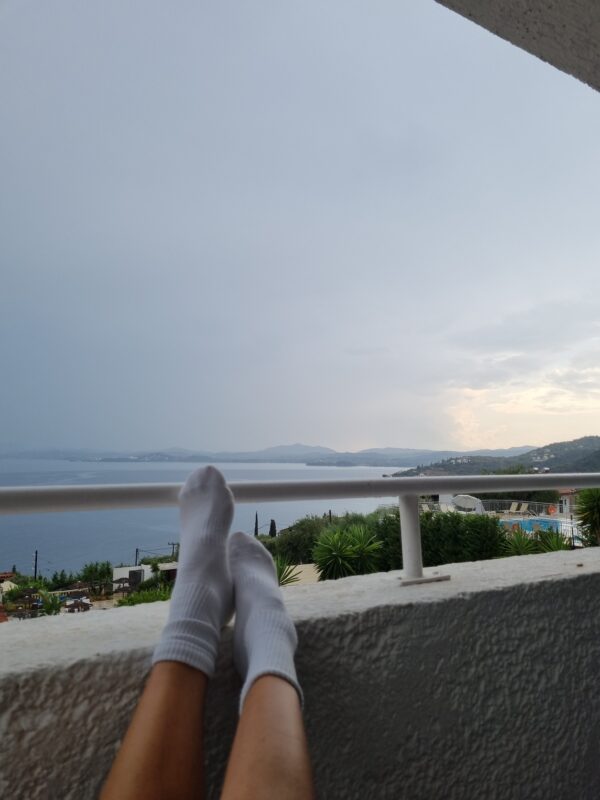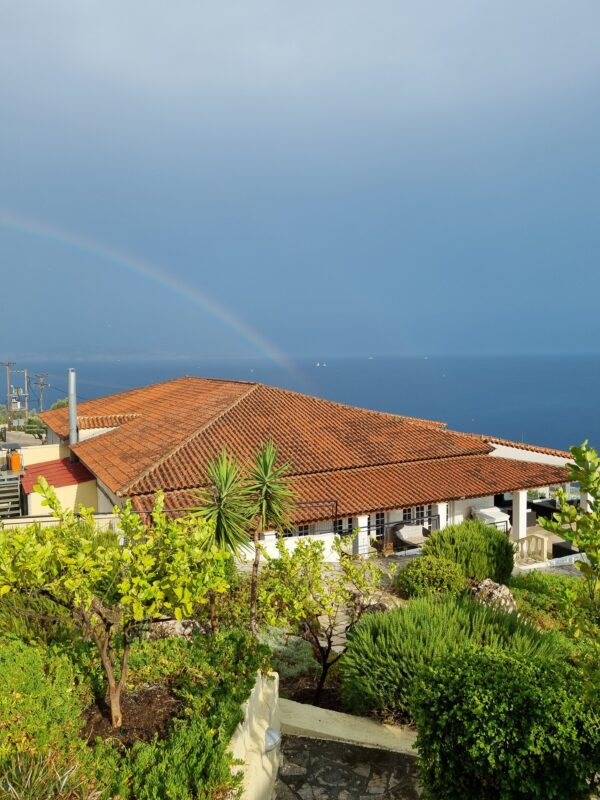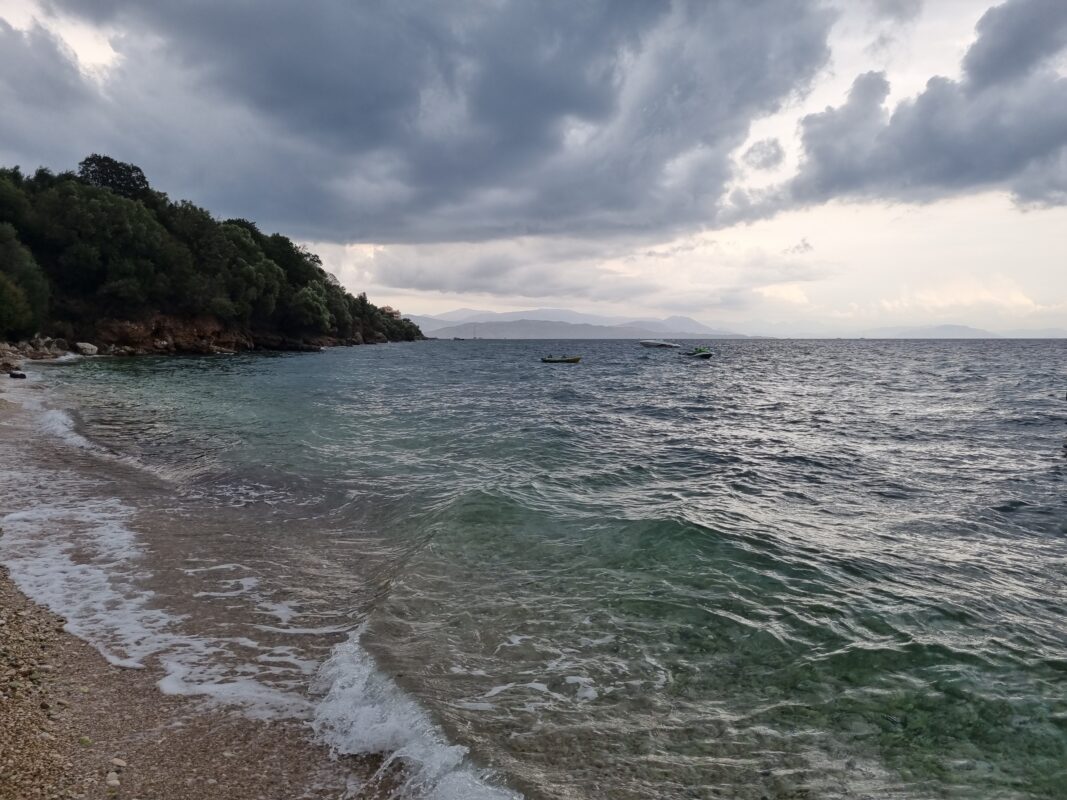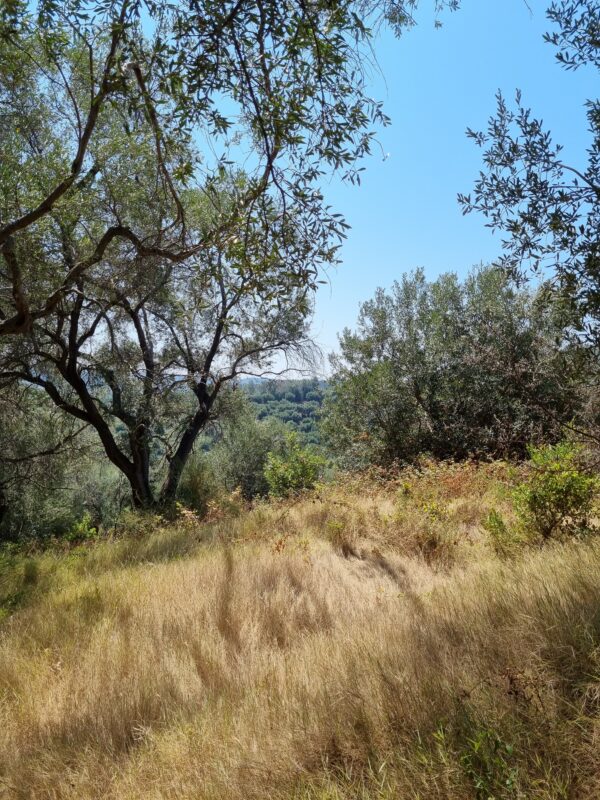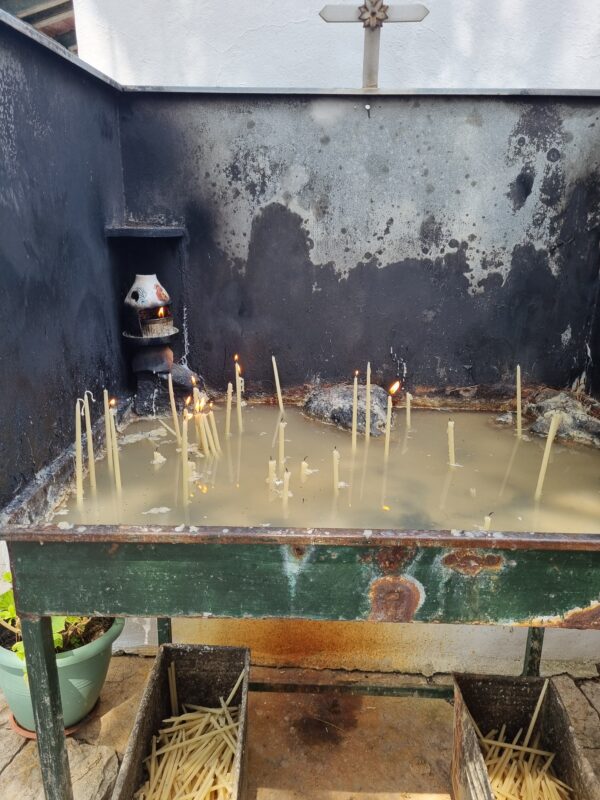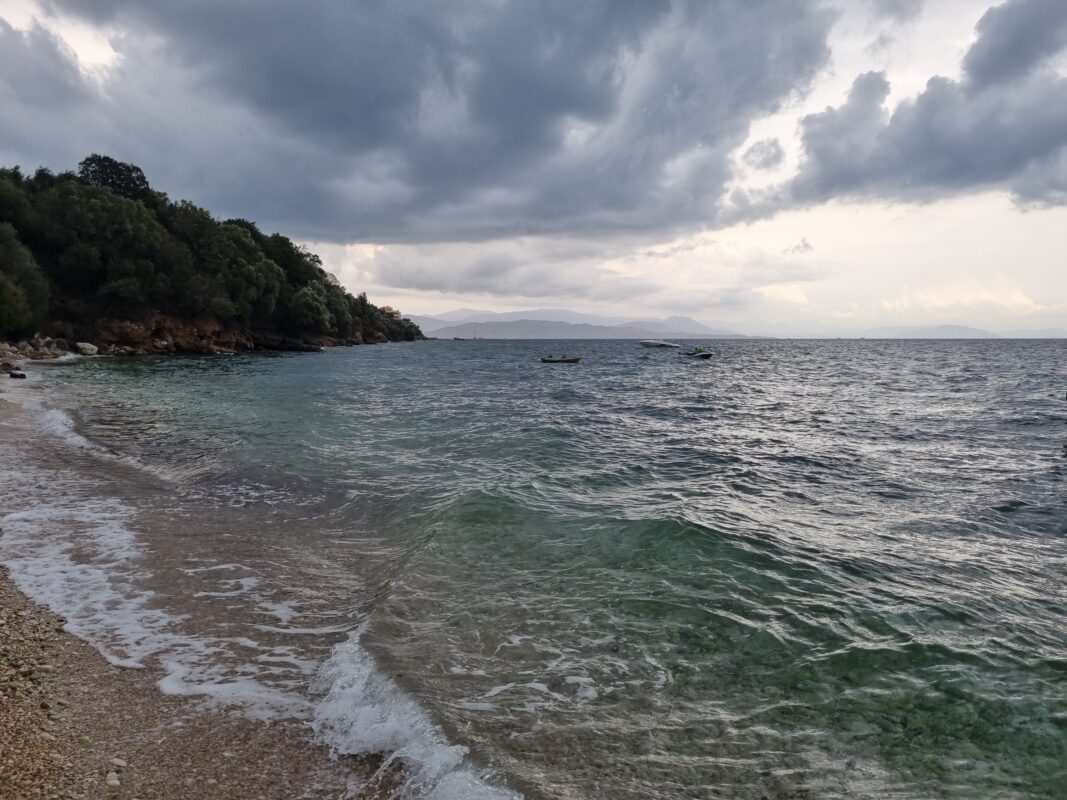Thunder
The clouds have been gathering for 4 days. First, a long, fluffy strip appeared somewhere in the east above Albania. With my Lithuanian beach experience, I expected it to move towards us and over the sun, if we are lucky, just for a short while, but maybe for longer, casting the shade everywhere, making the sea a duller colour, stealing away the sparkle from my surroundings.
The strip, however, didn’t move. All day it loomed over Albania and dissipated towards evening.
On the second and third days, the stripe reappeared and grew larger, now covering the mountains of Albania and mainland Greece. In the evenings, it wrapped the whole horizon and swallowed the lights of Corfu town. I wondered if the constant stripe of clouds there means it is cloudy in Sarandë, or if it’s just an optical illusion.
On the fourth day, I went to Kerkyra to check. Not only to check the clouds, of course, but to check what is now becoming my island – the planes landing in Kanoni, the adjacent tiny satellite islands of Vidos and Mouse Island, the narrow streets of the old town and small coffee shops, each serving frappé, which means different things in Northern countries and here.
The not-so-harmless white and fluffy stripe turned into a dark blue heavy cloud, still keeping to the sides of the sky, not daring to cover the sun yet, but already promising danger.
The expectation between the cloud so dark and the rain pouring over your head – again, in my previous, non-Corfu, north-southern experience – is very short. The clouds I used to know move, and they move pretty fast – the darkness comes, it rains, it thunders, it passes away.
This one didn’t. It stayed, but never moved closer, and so I ignored it, and at times, completely forgot about it, carrying on through the sunny and hot day in the old town. Later in the evening, the concentrated dark blue spread into a light blue veil and covered the entire sky as the sun set, then cleared to reveal the grand full moon, casting its reflection on the sea between Barbati and Kerkyra.
I woke up around 8 the next morning, thinking the wind was going to blow the roof off our house.
When I listened more carefully, I realised there was no wind, just thunder rolling around. Not the thunder which suddenly comes around and makes you jolt, no, the methodical one, almost constant.
The sea was calm and so were the olive trees around – just lightly moving branches in the breeze and raindrops falling onto the leaves.
The lightning struck the sea, cutting the mist in irregular shapes. Does it hit the water randomly? Or would it need something – anything – a boat, a fish, a drifting piece of wood to tie itself to like a rope between the water and the sky?
I opened the balcony, expecting the freshness and the smell of the rain, but was almost hit with the overpowering fragrance of rosemary. The rain spreads the essential oils from the leaves, usually so heavy and sticky with the abundance of the oil, so much of it that my hand would get sticky as I touched the bush walking by. Now the rain was washing the oil away, spreading it everywhere – the grass, the marble slippery stairs, the pool.
The thunderstorm continued throughout the day, lazily rolling the sea back and forth across the sea, stopped by Pantokrator and the Albanian mountains on each side. I read that in August, the statistical average is 3 rainy days in Corfu. Sitting on my covered balcony, watching the lightning in this rosemary thunderstorm – I felt lucky I could catch it.
From my balcony, I see other people sitting on theirs, watching the sea as if it were a football match.
Salt
Some days, kids prefer the pool because the sea salt makes them itch and hurts the small scratches and cuts that the boys would collect on holidays almost daily. The salt is most irritating to the skin as the sun dries it, so the natural solution is to stay in the water as much as possible to avoid drying. This is what we do.
I brought many projects to this holiday – knitting, books, notebooks, and an unfinished embroidery project – imagining myself sitting on the beach, reading, writing, and crafting.
Instead, we come, drop our bags somewhere in the shade, switch from sandals to water shoes to protect our feet from the sharp pebbles, put goggles or masks on and dive in, surfacing only to say something short to each other, show a direction in which some particularly nice fishes can be seen or to drink some water and eat a snack.
But eventually, we have to come out, get dry and then try to get rid of the salt covering us from head to toe. This is not easy; the salt is everywhere.
The tap water has a slightly salty taste in my mouth as I brush my teeth.
After the gym, I go to shower, and as the droplets reach my mouth, I wonder if it’s still my sweat that I can’t wash away or salty water.
The water in the restaurant tastes a little salty, too. I learnt to mask this taste by adding some ice and lemon to it.
Even the cappuccino I ordered had a salty note, mostly (strangely enough) on the foam part; even though it’s supposed to be milk, and so doesn’t have anything to do with water. A salty cappuccino might sound disgusting, but instead, it makes me think of sea foam, and in this context, it becomes rather fitting.
Towards the middle of the holiday, I remember myself on an exceptional childhood holiday, which was not at the Baltic Sea – a train trip to the Black Sea, to Crimea in Ukraine. The salt content in my sea – the Baltic sea – is tiny, but the Black sea had a lot of it, and this made me very curious as a child. I would pour seawater into plates and put them in the sun, waiting for the water to evaporate and to leave traces of dry sea salt on the plates. I collected the salt and brought it back to Lithuania to my grandmother (who also happened to be my best friend).
Next time, before we leave the beach, the kids and I fill our lunchboxes with seawater, and then at home, put them in full sun on the balcony. By next evening, the water is gone, and the bottom of the boxes is covered with a coarse white layer.
I give each kid a spoon, and they start scratching the bottom, putting the salt into another small snack box.
M. asks:
– How much salt would this make?
I consider the box, shifting the amount from side to side.
– I guess enough for almost four pots of borsch. (The borsch in our house is made in the 5L pot.)
– Ooh… – replies M. fascinated. – Let’s make even more!
Ian looks at the snackbox in wonder.
– Four big pots of borsch. Huge as mama’s breasts.

